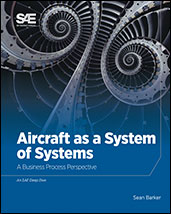Book

Aircraft as a System of Systems: A Business Process Perspective
2018-10-11
Aircraft as a System of Systems: A Business Process Perspective, written by Sean Barker, FBCS CEng and a former research scientist at BAE Systems in the UK, explains how developing even simple parts like a lever needs several different types of knowledge before moving on to the complications of designing a system. Today's airframers have taken on more of the role of systems integrators, putting the focus on the aircraft as a system-of-many-systems. Whereas an aircraft integrates many different systems into a single design, the system of systems which supports it is built by federating the systems of the different organizations, which were built and run independently of each other. Aircraft as a System of Systems: A Business Process Perspective provides a thorough analysis of how building aircraft taps into a huge pool of knowledge, how its complexity is also reflected in the numerous process links that exchange knowledge between different groups.
